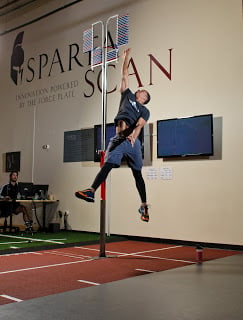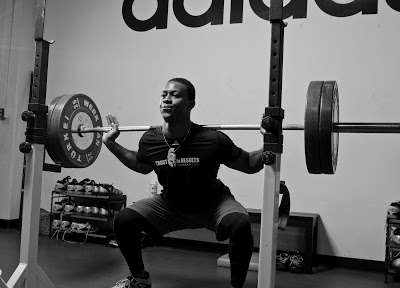
Our ancestors knew that consistency was their most important weapon; “an off day” was usually your last day at the hands of a predator. Sport is similar, in that as your playing level increases, it is critical to perform at the same level every day. Sports that compete multiple times in a week further highlight this need, perhaps the greatest examples being sports that involve greater volumes of running, such as soccer and basketball.
For 3 months this past summer, we were building Jeremy Lin’s fatigue resistance off the court, so this post will examine the effects of fatigue on the most potent and utilized means of scoring in the game of basketball, a jump shot.
Dr. Charles Hess defined the physical foundation of a jump shot as “a player’s ability to obtain optimal height in the air as quickly as possible to outmaneuver the opponent.” As a result, a study out of the University of Kansas examined this foundation and the effects from fatigue. Statistically, the authors found the major differences between the fatigued group and non-fatigued group was vertical displacement. Basically, the tired players could not maintain the height of their jump while shooting the ball, forcing the shot angle to be altered.
More recent research has confirmed these findings, adding that fatigued players compensate for this loss of height by pushing the ball forward from the elbow. Such adjustments decrease the optimum angle of shot release, increasing the chances of deflection and inaccuracy.
In order to maximize the accuracy of the jump shot, the load must be vertical and repeatable, best addressed through an efficient product of Ground Reaction Force (GRF). It is not just a simple need of more GRF, but rather an efficient balance of the 3 variables of GRF, the rate at which it is developed, the magnitude, and the duration of such production.

For most basketball players, shooting MORE can actually be detrimental as you learn poor mechanics like pushing the ball forward due to the loss of optimal jump height. We encouraged Jeremy Lin to shoot until his quality started to decline, and then added our aggressive strengthening program. We used the squat due to its simultaneous ability to improve GRF and mobility, especially in the ankles, which is a key cause of knee pain and injuries. Once certain weights and repetitions are mastered, the rest time is reduced. As you can see below, such depths allow a vertical, efficient transfer of force into the ground.
You can also just keep shooting on the court; substitutes off the bench never get tired.